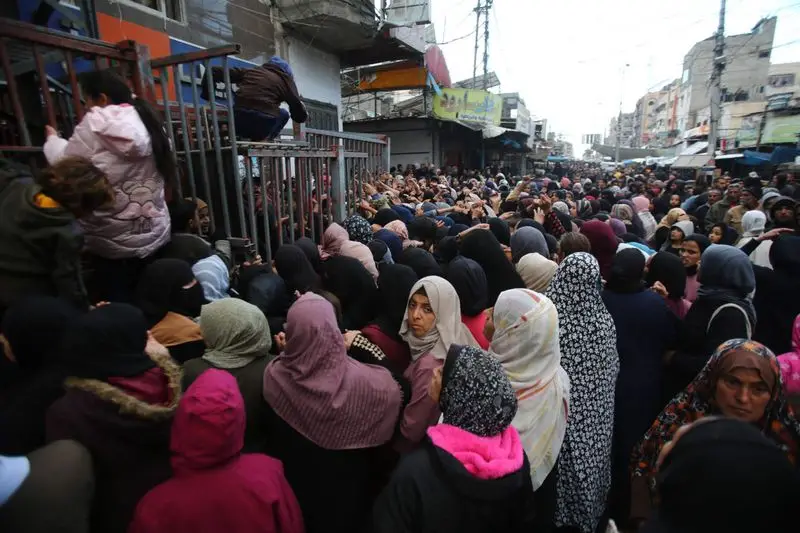The Gaza Strip faces an unprecedented food crisis after more than 14 months of war, leaving nearly two million Palestinians struggling to access essential supplies such as bread and flour. With bakeries scarce and supplies dwindling, desperate scenes of long lines and heart-wrenching stories of survival are unfolding daily across the besieged territory.
Every morning, throngs of Gazans crowd outside the few remaining bakeries, hoping to secure basic sustenance. Many, like Hatem Kullab, walk miles to obtain bread. “I walked about eight kilometers (five miles) to get bread,” said Kullab, a displaced resident now living in makeshift tents. Such treks have become the norm in a territory where food aid has dwindled, exacerbated by international aid shortages and a near-halt in local production.
Breadlines Turn Deadly
In central Gaza, the dire circumstances recently turned tragic. A stampede at a Deir el-Balah bakery claimed the lives of two women and a child. “To get a loaf of bread, you need a whole day of eight to 10 hours,” said Jameel Fayyad, whose sister was among the victims. Speaking to AFP, he lamented the suffering faced by millions of Palestinians, blaming poor bakery management, profiteering traders, and international organizations like the World Food Programme for not doing enough.
The cost of flour, once affordable, has skyrocketed. A 50-kilogram bag of flour, which sold for 100 shekels ($27) before the war, now costs up to 700 shekels ($192). Warehouses, flour mills, and industrial bakeries in Gaza remain crippled by the ongoing bombardment, further choking supply lines.
Humanitarian Aid Falls Short
Humanitarian aid, although trickling in, has been hampered by restrictions imposed by Israel and local looting. The United Nations Relief and Works Agency for Palestine Refugees in the Near East (UNRWA) recently halted aid deliveries via a key crossing with Israel, citing looting and operational challenges. For many, the suspension feels like a death sentence.
“Every day, I think we will not survive, either because we will be killed by Israeli bombing or by hunger,” said Layla Hamad, who lives with her family in a tent in southern Gaza.
The Bigger Picture
The crisis has compounded since October 2023, when Hamas launched a deadly attack on southern Israel, killing over 1,200 people. Israel’s subsequent retaliatory strikes have resulted in more than 44,500 deaths in Gaza, according to the Hamas-run health ministry figures deemed reliable by the United Nations. With more than half of Gaza’s infrastructure destroyed, basic production and supply chains are nearly non-existent, and the cost of survival continues to escalate.
As the conflict grinds on, international agencies and local leaders warn that famine looms in northern Gaza, and hunger has already reached crisis levels across the strip. For the people of Gaza, daily life has become a battle for survival, fought with determination but at unimaginable costs.





